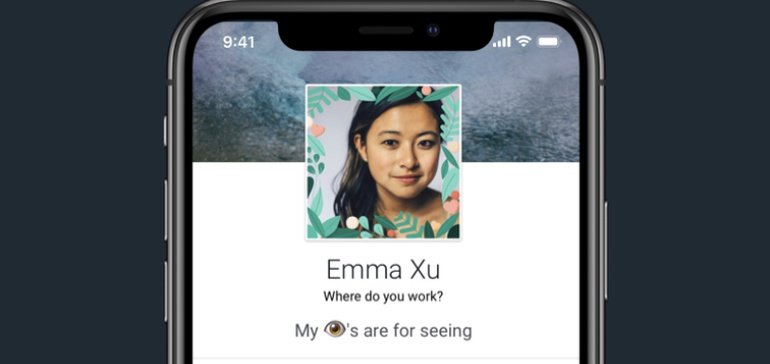SOCIAL
Meta Announces New Restrictions on the Creation and Use of Profile Image Frames on Facebook

Here we have yet another example of why we can’t have nice things.
Back in 2015, Facebook rolled out profile image frames, aligned with sports teams initially, which gave users a simple, customized way to share their support for their favorite team in the app. Facebook expanded on that over the coming years, and opened up the capacity for users to create their own frames and at one stage, there were thousands of potential options for profile frames available via its Frames Gallery in the app.
But that all changed over the last year.
Following Facebook’s decision to ban anti-vaccine messaging in its apps in late 2020, some activists switched to profile frames instead, creating anti-vax statements that could be shared via your main Facebook image.

CNBC found a rising number of these anti-vaccine frames, and alerted Facebook accordingly, which first began removing the offending frames from its Frames Gallery one by one. Then it removed all of its frames entirely, except for those from approved partners, while it also shut down the capacity for people to create their own frames via its Frame Studio tool.

If you’ve noticed a lot fewer profile frames on Facebook of late, this would be why – and now, parent company Meta is moving to officially tighten its restrictions on profile frame creation, with new regulations on the creation and use of such across the app.
As per Meta:
“Last year, we limited the ability to create profile frames on Facebook to authoritative organizations. We’re continuing that work now, so that Profile frames from unapproved Pages and profiles can no longer be applied to new profile pictures. On March 21, only profile frames from certain government services or organizations and those providing authoritative information on COVID-19 will be available. This change reflects our continued emphasis on helping people express their support around important issues like voting and reliable health information.”
Again, nice things.
Meta says that only municipal, state and local agencies (including local election offices), municipal government agencies, emergency response agencies, public health agencies and local law enforcement will now be allowed to create profile frames.
“Authoritative sources on COVID-19 that will continue to have access to frames globally include organizations such as the World Health Organization, UNICEF, Centers for Disease Control, and national government agencies or ministries of health.”
So, basically, profile frames will now be cause-aligned specifically, and there’ll be no more fun, decorative frames, outside of some of the generic ones provided by Meta.
Which is a bit of a shame. It’s not a major functional change, and it won’t have a big impact on how people use Facebook, but still, it is a little sad that we lose an entire creative option because of a level of misuse, which, due to complexities in detection, Meta can’t simply weed out and police at scale.
Meta says that existing profile frames will be removed from the Frame Studio on March 21st. Organizations that currently have an active frame will be able to download their frame from Frame Studio till that date.
But basically, you can expect to see a lot fewer profile image frames in the app moving forward.
I guess, in theory, Meta could still look to use profile frames as a paid promotional option in future, under strict approval in each case, so we may still see more colorful, themed frames at some stage. But really, Meta’s probably more focused on its 3D avatars now anyway – and maybe, in that context, profile frames don’t serve any real purpose moving forward either way.
But it’s another impact of the pandemic – an unexpected one, but a forced change in process nonetheless.
Source link
SOCIAL
Snapchat Explores New Messaging Retention Feature: A Game-Changer or Risky Move?

In a recent announcement, Snapchat revealed a groundbreaking update that challenges its traditional design ethos. The platform is experimenting with an option that allows users to defy the 24-hour auto-delete rule, a feature synonymous with Snapchat’s ephemeral messaging model.
The proposed change aims to introduce a “Never delete” option in messaging retention settings, aligning Snapchat more closely with conventional messaging apps. While this move may blur Snapchat’s distinctive selling point, Snap appears convinced of its necessity.
According to Snap, the decision stems from user feedback and a commitment to innovation based on user needs. The company aims to provide greater flexibility and control over conversations, catering to the preferences of its community.
Currently undergoing trials in select markets, the new feature empowers users to adjust retention settings on a conversation-by-conversation basis. Flexibility remains paramount, with participants able to modify settings within chats and receive in-chat notifications to ensure transparency.
Snapchat underscores that the default auto-delete feature will persist, reinforcing its design philosophy centered on ephemerality. However, with the app gaining traction as a primary messaging platform, the option offers users a means to preserve longer chat histories.
The update marks a pivotal moment for Snapchat, renowned for its disappearing message premise, especially popular among younger demographics. Retaining this focus has been pivotal to Snapchat’s identity, but the shift suggests a broader strategy aimed at diversifying its user base.
This strategy may appeal particularly to older demographics, potentially extending Snapchat’s relevance as users age. By emulating features of conventional messaging platforms, Snapchat seeks to enhance its appeal and broaden its reach.
Yet, the introduction of message retention poses questions about Snapchat’s uniqueness. While addressing user demands, the risk of diluting Snapchat’s distinctiveness looms large.
As Snapchat ventures into uncharted territory, the outcome of this experiment remains uncertain. Will message retention propel Snapchat to new heights, or will it compromise the platform’s uniqueness?
Only time will tell.
SOCIAL
Catering to specific audience boosts your business, says accountant turned coach

While it is tempting to try to appeal to a broad audience, the founder of alcohol-free coaching service Just the Tonic, Sandra Parker, believes the best thing you can do for your business is focus on your niche. Here’s how she did just that.
When running a business, reaching out to as many clients as possible can be tempting. But it also risks making your marketing “too generic,” warns Sandra Parker, the founder of Just The Tonic Coaching.
“From the very start of my business, I knew exactly who I could help and who I couldn’t,” Parker told My Biggest Lessons.
Parker struggled with alcohol dependence as a young professional. Today, her business targets high-achieving individuals who face challenges similar to those she had early in her career.
“I understand their frustrations, I understand their fears, and I understand their coping mechanisms and the stories they’re telling themselves,” Parker said. “Because of that, I’m able to market very effectively, to speak in a language that they understand, and am able to reach them.”Â
“I believe that it’s really important that you know exactly who your customer or your client is, and you target them, and you resist the temptation to make your marketing too generic to try and reach everyone,” she explained.
“If you speak specifically to your target clients, you will reach them, and I believe that’s the way that you’re going to be more successful.
Watch the video for more of Sandra Parker’s biggest lessons.
SOCIAL
Instagram Tests Live-Stream Games to Enhance Engagement

Instagram’s testing out some new options to help spice up your live-streams in the app, with some live broadcasters now able to select a game that they can play with viewers in-stream.
As you can see in these example screens, posted by Ahmed Ghanem, some creators now have the option to play either “This or That”, a question and answer prompt that you can share with your viewers, or “Trivia”, to generate more engagement within your IG live-streams.
That could be a simple way to spark more conversation and interaction, which could then lead into further engagement opportunities from your live audience.
Meta’s been exploring more ways to make live-streaming a bigger consideration for IG creators, with a view to live-streams potentially catching on with more users.
That includes the gradual expansion of its “Stars” live-stream donation program, giving more creators in more regions a means to accept donations from live-stream viewers, while back in December, Instagram also added some new options to make it easier to go live using third-party tools via desktop PCs.
Live streaming has been a major shift in China, where shopping live-streams, in particular, have led to massive opportunities for streaming platforms. They haven’t caught on in the same way in Western regions, but as TikTok and YouTube look to push live-stream adoption, there is still a chance that they will become a much bigger element in future.
Which is why IG is also trying to stay in touch, and add more ways for its creators to engage via streams. Live-stream games is another element within this, which could make this a better community-building, and potentially sales-driving option.
We’ve asked Instagram for more information on this test, and we’ll update this post if/when we hear back.
-

 SEARCHENGINES6 days ago
SEARCHENGINES6 days agoGoogle Core Update Volatility, Helpful Content Update Gone, Dangerous Google Search Results & Google Ads Confusion
-

 SEO6 days ago
SEO6 days ago10 Paid Search & PPC Planning Best Practices
-

 MARKETING5 days ago
MARKETING5 days ago5 Psychological Tactics to Write Better Emails
-

 MARKETING7 days ago
MARKETING7 days ago2 Ways to Take Back the Power in Your Business: Part 2
-

 SEARCHENGINES5 days ago
SEARCHENGINES5 days agoWeekend Google Core Ranking Volatility
-

 SEO6 days ago
SEO6 days agoWordPress Releases A Performance Plugin For “Near-Instant Load Times”
-

 MARKETING6 days ago
MARKETING6 days agoThe power of program management in martech
-
SEARCHENGINES4 days ago
Daily Search Forum Recap: April 15, 2024














You must be logged in to post a comment Login